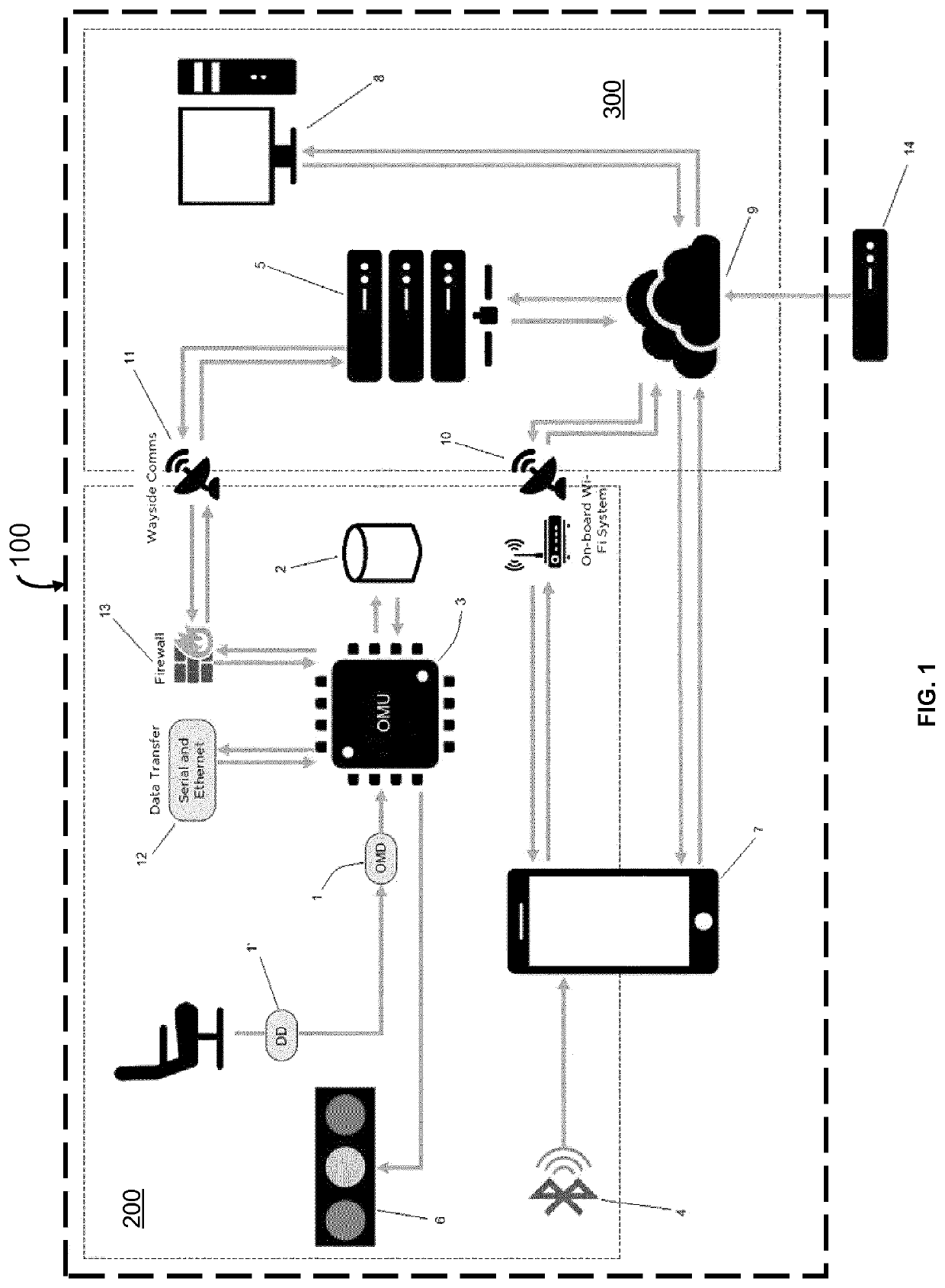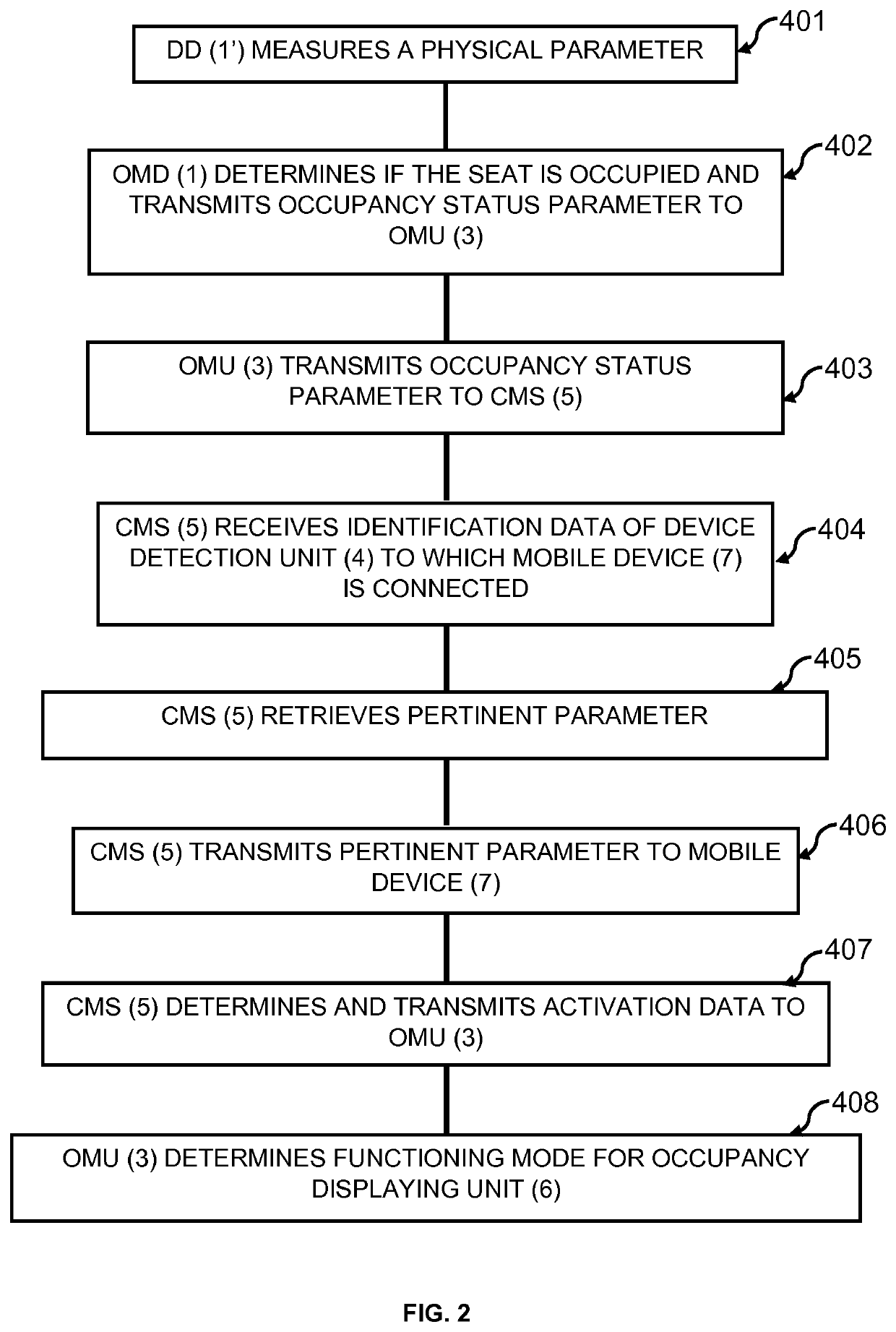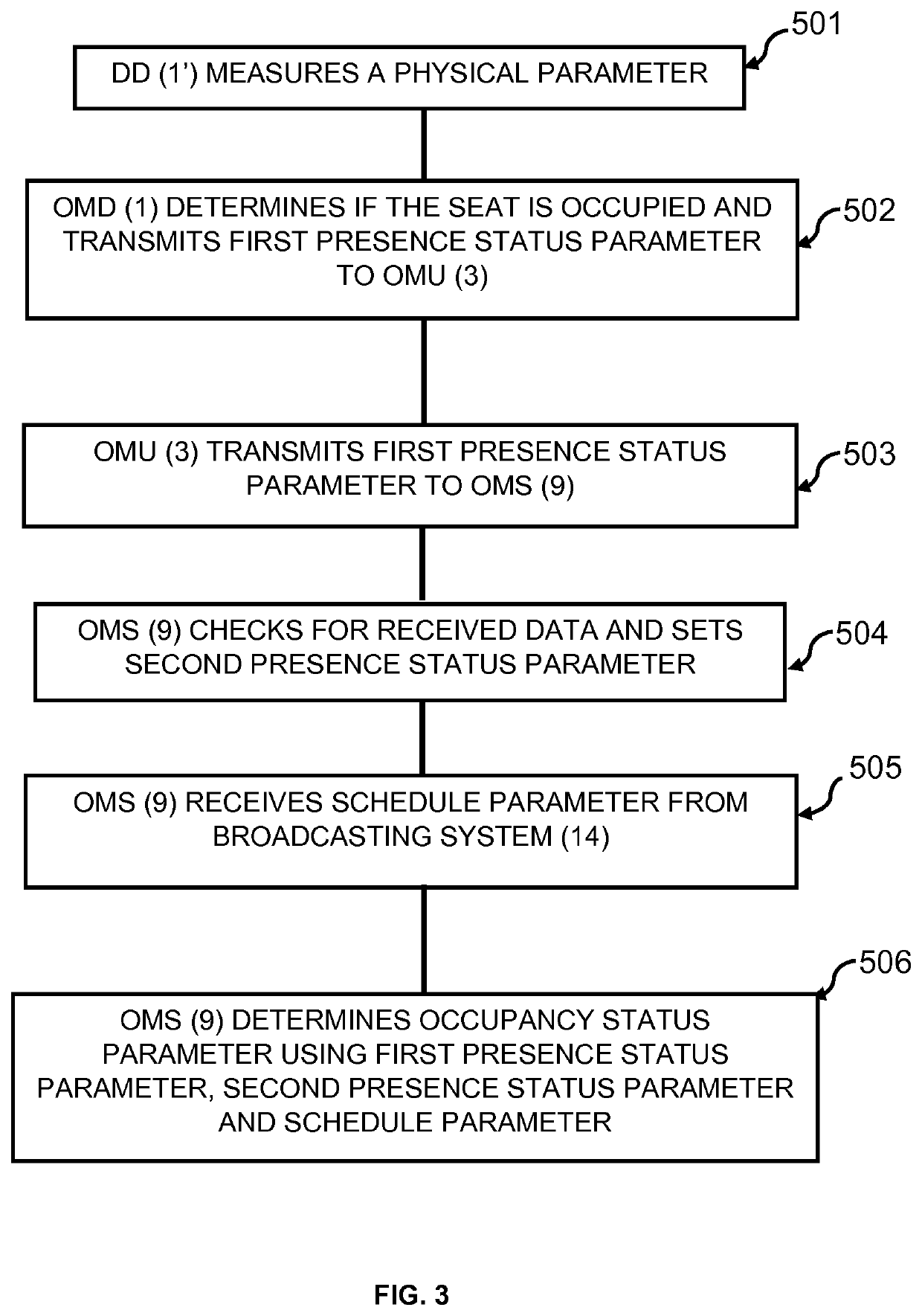Method and system for monitoring occupancy of a seat arranged in a transportation vehicle
a technology for transportation vehicles and seats, applied in multi-programming arrangements, transportation and packaging, instruments, etc., can solve the problems of not providing functionalities to improve satisfaction at a later stage of the trip, not allowing reservations, availability of seats or standing areas, etc., to achieve the effect of effective monitoring of seat occupancy and enhancing passengers' satisfaction
- Summary
- Abstract
- Description
- Claims
- Application Information
AI Technical Summary
Benefits of technology
Problems solved by technology
Method used
Image
Examples
Embodiment Construction
[0018]A system 100 for monitoring occupancy of a seat in a transportation vehicle 200 is schematically represented on FIG. 1. In a preferred embodiment, the transportation vehicle 200 is train carriage, especially a passenger car.
[0019]The architecture of the system 100 relies on two distinct parts. A first part of the system 100 groups elements of the system which are arranged in the transportation vehicle 200. A second part of the system 100, hereinafter referred to as “the remote part 300” since it is distant from the transportation vehicle 200, assembles elements of the system which are not arranged in the transportation vehicle. For the sake of clarity, the transportation vehicle 200 is schematically represented on FIG. 1 as a first rectangle bounded by a dashed line while the remote part 300 is represented as a second rectangle bounded by a second dashed line. As shown on FIG. 1, the transportation vehicle 200 includes at least one seat, which occupancy is monitored in real-ti...
PUM
 Login to View More
Login to View More Abstract
Description
Claims
Application Information
 Login to View More
Login to View More - R&D
- Intellectual Property
- Life Sciences
- Materials
- Tech Scout
- Unparalleled Data Quality
- Higher Quality Content
- 60% Fewer Hallucinations
Browse by: Latest US Patents, China's latest patents, Technical Efficacy Thesaurus, Application Domain, Technology Topic, Popular Technical Reports.
© 2025 PatSnap. All rights reserved.Legal|Privacy policy|Modern Slavery Act Transparency Statement|Sitemap|About US| Contact US: help@patsnap.com



